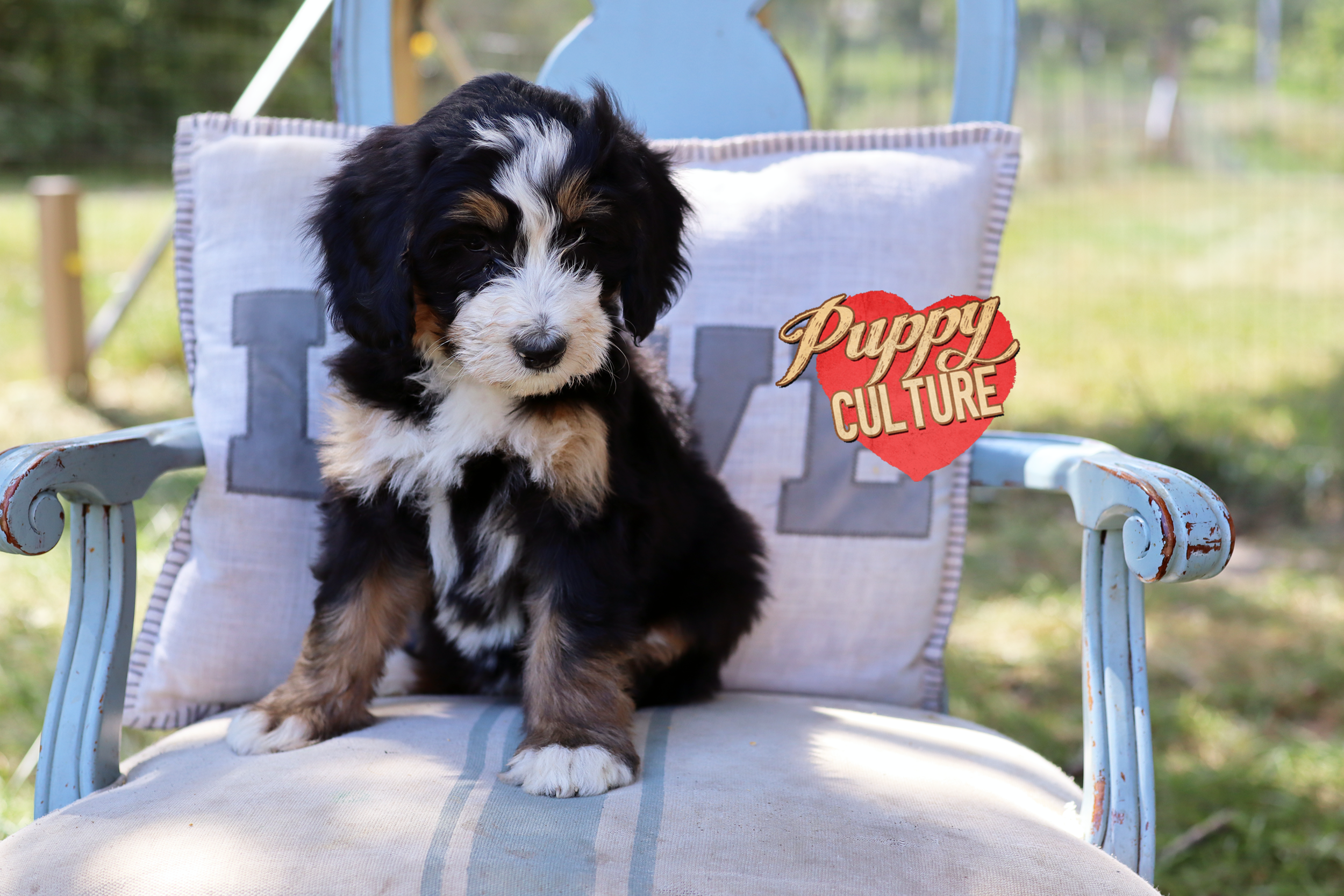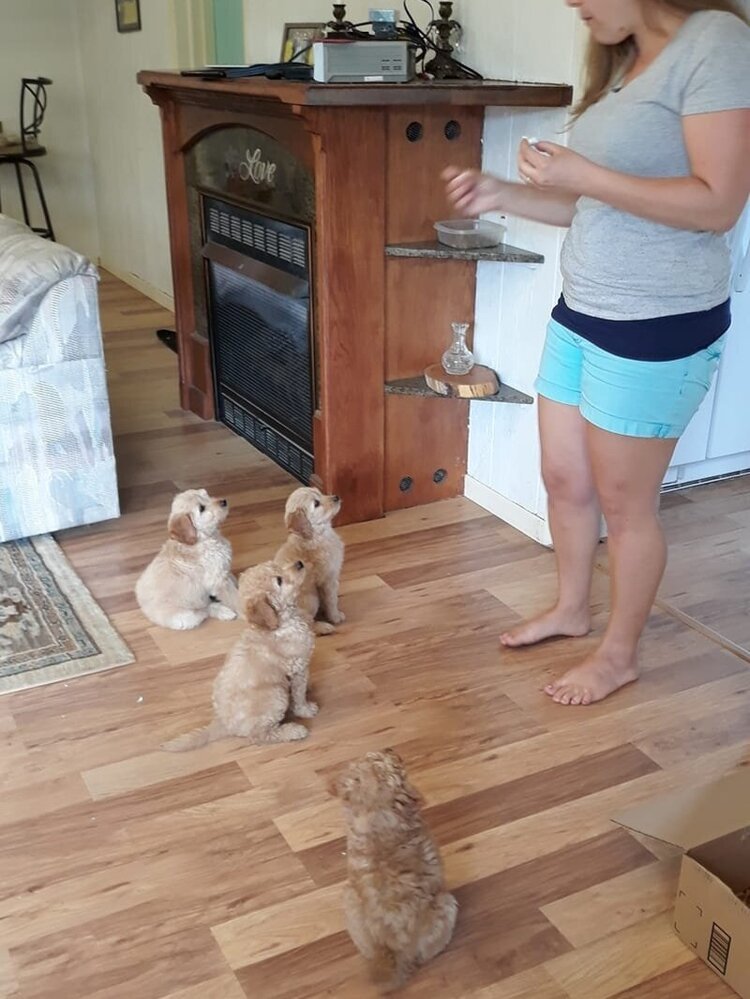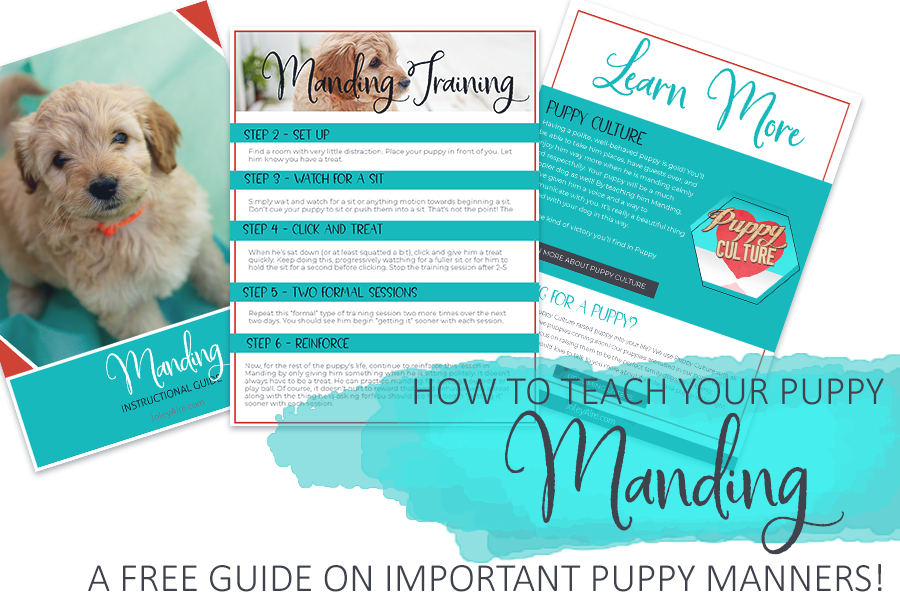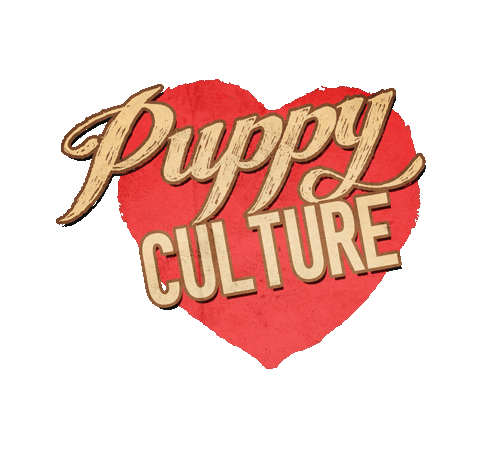
I want to introduce you to a fictional dog: Bosco. Now Bosco was raised as a lot of puppies are: in a kennel. The place was kept clean and they were given plenty of time to exercise. The owners played with Bosco here and there, but his interactions with the world were fairly limited.
Bosco found a new family at 8 weeks old and grew up. They loved Bosco but noticed a few “quirks” about him that made things difficult.
Bosco would approach new experiences with fear and trembling. These would include going to new places, meeting new people, or encountering new objects. Sometimes his fear would get so out of hand he would growl and even snap if it approached him. His owners had to keep him home all the time.
He jumped up on his owners whenever he wanted something (a habit that was terribly hard to break him of). He was difficult to potty train because it was like he learned it was ok to go on his bed. He would charge through doors, bark incessantly, and snap if anyone touched his food.
Now, if you’ve been around dogs much, you’ve probably experienced a dog like Bosco to some degree. They might not be the full nervous wreck that Bosco was, but have similar traits.
Some might wonder if Bosco was abused in some way in his first home. That is often the assumption with dogs who have some emotional instability but usually isn’t the case. Bosco was never abused, just not properly trained and socialized during those critical first 12 weeks.
Today I am excited to introduce you to a program that prevents dogs from becoming like Bosco: Puppy Culture.
Keep reading to find out what Puppy Culture is, how it produces amazing puppies, and why we use it in our breeding program. If you are wondering what all this means for you as the puppy owner, I’ll try to explain the benefits you’ll have as well.
What is puppy culture?
Created by Jane Messineo Lindquist, Puppy Culture consists of a set of videos and a workbook that outlines the procedures and protocols of the program.
The videos follow a litter of Bull Terriers throughout their first 12 weeks of life in a “Teachumentory” style, cutting back and forth from demonstrating the methods to the explanation and science as to why they are done.
The workbook is amazing! It tells you what to do, when, and gives handy charts and worksheets to track your puppy’s progress. Within every week you’ll find puppy milestones and action steps that need to be done once those milestones are observed. It’s jam-packed with tips and reminders that provide education along the way without being too overwhelming.
The critical first 12 weeks
Some might wonder, why the first 12 weeks? Why not train and address behaviors when the puppies are older?
Well, I’ll tell you.
Research has shown (and this is explained in depth in the Puppy Culture video) that young puppies’ brains are like sponges. They can absorb and process information much faster than an older dog at this young age. The best part is, the information given to them now will stay with them for a long time after.
Puppies also have very little fear during their first weeks, so new experiences are approached with curiosity. To capitalize on this, Puppy Culture instructs you to introduce various objects, locations, and experiences that they might encounter during their lifetime; always in positive ways. This teaches puppies to approach novelty with calm, curiosity rather than fear. But more on that later.
The first 12 weeks are a crucial time for shaping a puppy into the type of dog we all want. While training done later in life may work, it takes much more time and effort and some things are almost impossible to train out of an adult dog.
new experiences - fear or curiosity?
Remember my fictitious dog, Bosco? How he trembled in fear at new experiences? This is not ideal for most dog owners. Our fast-paced, ever-changing lifestyles mean we need a dog who can take novelty in stride and learns to seek enrichment rather than cower at it.
For dogs, if they learn in the first 12 weeks that new = scary, they will forever carry that with them. On the contrary, if they learn that new experiences are something to be happy about and look forward to early on, they will be able to continue that throughout their lifetime. The goal is that they approach new experiences with calm confidence.
The way Puppy Culture helps with this is by encouraging breeders and owners to introduce a new object or experience to the puppies world every day from the time they can see (about 10 days old). The new objects can be different surfaces to walk on, textures to chew on, toys, household items, etc. Experiences include exploring a new room in the house, hearing different sounds, or feeling water for the first time.
As the puppies grow, the experiences become a little more complex and exciting. They get to go outside or explore different areas of the property, they will go to a local hardware store, take car rides, and even visit a beach (if the weather permits).
Socialization
A poorly socialized puppy will grow to be fearful or aggressive toward new people and dogs. It’s the same idea as with new experiences. If they aren’t exposed to different types of people and dogs during those first 12 weeks while they generally have very little fear and take everything in like sponges, they’ll most likely become fearful of them in the future. It’s a natural response for protection.
As you can imagine, fear and aggression toward new people and dogs can lead to some serious problems for the dog and their owner. Unless you plan to never take your dog out or have others come to your house, early socialization is critical!
The Puppy Culture program includes a lot of instruction and guidance to produce well-socialized puppies. They suggest having the puppies meet a variety of people: old, young, men, women, people with beards, hats, coats, heels, and glasses to name a few.
Then there are the ever-popular Puppy Parties! A breeder following Puppy Culture will invite a few guests who are experienced with dogs to help with training the puppies through a mini agility course. Even if the puppies aren’t destined for agility, the small challenges are great for teaching the puppies to conquer fears and obey their owner.
The Puppy Party ends in a meal around the table to show the puppies what it looks, smells, and sounds like when their owners entertain guests.
As the puppies grow, they are given opportunities to spend time with other adult dogs to learn how to be good citizens of dog society. Breeders look for adult dogs that are firm, but gentle teachers that will set good examples for the puppies.
Potty Training
If you are getting ready to bring a puppy into your home, potty training has probably crossed your mind a few times (or a lot more than a few times). It can be daunting to plan for and exhausting to go through. Potty training is a lot of work.
Well, if you are buying a Puppy Culture puppy you’re in luck! They’ve already been given a HUGE headstart!
In Puppy Culture, Jane uses litter boxes to start teaching the puppies to leave the “nest” to eliminate starting as young as 3 weeks old. This works right along with their natural instincts to keep the nest clean.
As the puppies grow, the litter box area gets smaller and moves farther away from the “den”. The idea is that they learn there are many places they may not use as a bathroom and one place where it’s ok. Then, they are taken outside on a routine to learn that they are to use the outdoors to go. Most litter materials have a natural smell to them so they have no problem transitioning to the outdoors.
Communicating with your puppy
Puppies have a lot to learn at such a young age. They need to learn how to get along well in the dog world as well as in the human world. Part of getting along means learning to communicate. Since a puppy can’t talk to us to tell us what he wants, Puppy Culture establishes a “Communication Trinity” to help give that puppy a voice.
The first part of communicating with the puppy is with the clicker. The clicker is a powerful tool to help tell the puppy they’ve done a good thing and will get a reward. Its crisp sound makes pinpointing the desired behavior more accurate and therefore, more effective. In Puppy Culture, breeders are taught to “power up” the clicker, or teach the puppy what the clicker means. It only takes a few sessions of clicking and immediately giving a treat for the puppy to learn what it means.
Once the puppy knows what the clicker means, the next objective is to teach the puppy to offer behaviors to get a reward. In Puppy Culture breeders do this by playing the “box game” where a small box is placed on the floor by the puppy and they are clicked whenever they interact with the box. As the game goes on and they start to pick up on the fact that they are getting treats for touching the box, they’ll offer that behavior more often and quickly. We don’t really care that they learn to touch a box, just that they learn to keep trying new things until there is a click.
The final way Puppy Culture teaches communication is through Manding.
Manding looks like the “sit” command, but it’s so much more. The idea is not that the puppy learns to sit on command, but rather to use a sitting position as a way to ask for what they want. If they want a treat, a pet, or to go outside, they learn to sit quietly in front of you to ask instead of barking or jumping. Teaching this is simple and only takes a couple of five-minute sessions, but what it does for a dog’s future life is amazing!
I made a guide that explains a little more about Manding and how to train it in your future puppy. I’d be happy to give it to you for free. Just click the button below!
Our Experience
We had a few litters before Puppy Culture. I did a lot of research before breeding our dogs, but still felt a little lost and confused on what I should be doing and at what time to raise the puppies to be excellent family dogs.
We actually won Puppy Culture in a giveaway from Designer Dogs of America. I had never heard of it before then. As I started to watch the videos and flip through the workbook, I knew I had been given a tool of gold!
The program gave us a path to follow with clear and easy instructions. I finally knew what to do, when to do it, why I was doing it, and what it would mean for the puppies’ futures. Adding Puppy Culture to our program really was a turning point for us: we were finally able to provide the incredible family dogs we hoped for!
We had our first “Puppy Culture” litter and could not have been more thrilled with the results. The program was a lot of work, but it was so worth it! The owners reported the puppies were easy to train, took to new circumstances well, and were good with other dogs and people.
After that first litter, I knew we could never go back! With this program, we are confident that our puppies will be excellent family dogs. It feels good to know that we can equip our puppies to do well in the world for their future.
Continuing your puppy’s training
You might think that Puppy Culture is just for breeders. The good news is, puppy owners can benefit from the program just as much! If you are adopting a Puppy Culture raised a puppy, buying the Puppy Culture video and workbook can help you continue their training and socialization. It will also show you what’s been done from day one and why it’s important.
(If your puppy wasn’t raised on Puppy Culture, getting the program is even more important! While Puppy Culture is best for young puppies, the techniques and protocols can be used on any aged dog with great benefit!)
When you buy a Joley Aire puppy, we highly recommend getting the program a few weeks before taking your puppy home so you can get a start on learning it and planning for it before your puppy arrives. We do as much as we can to follow the protocols up until 8 weeks old so the puppy is ready to pick right up where we left off when they go to your home.
You’ll find that there is a difference to Puppy Culture puppies and following the program is a lot of fun! When you’ve finished the 12-week program, there are more books and resources available from the creators of Puppy Culture.
“The proof is in the puppies”
I probably don’t need to tell you (again) that Puppy Culture makes a huge difference in the puppies raised by it. They learn to adapt to new circumstances, become enrichment seekers, are well socialized, have a head start on potty training, have ways to communicate with people, and are easier to train. There’s even more to the program not mentioned in this article!
Puppy Culture has been a game-changer for our breeding program which focuses on wonderful family pets. We go through the program with every litter and can say with confidence that they have been given the best start at life.
If you buy a Joley Aire puppy, you’ll not only be getting a well-bred and healthy pet but a “Puppy Culture puppy”. That means a lot! To maximize your new puppy’s training and socialization, we highly recommend investing in Puppy Culture!
After all, as the tagline says: “The Proof is in the Puppies”.
Free Manding Guide
When most dogs and puppies want something they bark, jump, whine, and make a big fuss. This might be cute while they are little, but no one likes an adult dog demanding things like this! These undesirable behaviors can be a huge problem down the road!
How would you like it if your puppy asked for the things he wants by politely sitting and making eye contact with you? That would be amazing right?
Well, this sweet behavior is called “Manding” and it’s actually really easy to teach!
This guide is for everyone: whether you already have a dog or are looking at purchasing a puppy in the future! If your puppy has had some Manding training in the past, you’ll still benefit from understanding how it’s done and how to continue to reinforce the behavior. If you have an older dog that’s never learned Manding, it can still be taught! The best part is, you can begin training right away and should start seeing results on the first day!

Puppy Culture Purchasing Guide
If you are interested in purchasing some Puppy Culture resources as a puppy buyer, here are the products we recommend:
-
This is the flagship program that takes you through the first 12 weeks of a puppy's life and provides training and socialization protocols throughout. If you really want to know what your puppy has been doing while with us, the science behind the program, and want to continue their training seamlessly - this is what you should buy.
-
Distractions are a fact of life. Your puppy can go crazy every time something new approaches, or you can train them to look to you and actually focus more when they come. This is a great video to incorporate into your training education because when you don't have the puppy's attention, you can't control them.
-
This book was written to help people train "impossible" dogs, however, the concepts and methods work incredibly well for any dog or puppy. If you are looking for one affordable resource, this is it.
-
Learn more about spaying and neutering your puppy (when you should have it done, what happens, what to expect) with this colorful booklet.
-
Exercise is important! Learn more about it with this booklet.
The Puppy Culture shop does offer some bundles that provide multiple products at a discount that are worth checking out. Here are the bundles we recommend for Puppy Owners:
The Full Power of Puppy Culture - For Puppy Owners
Get Started With Puppy Culture - For Puppy Owners
Impossible Dog Bundle








